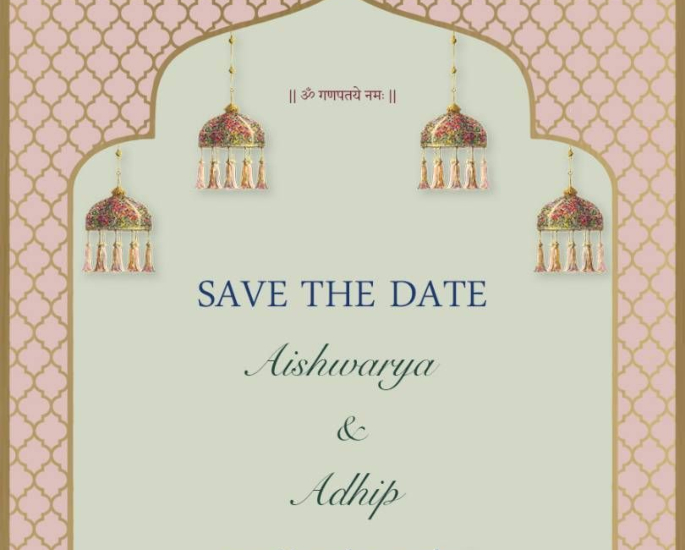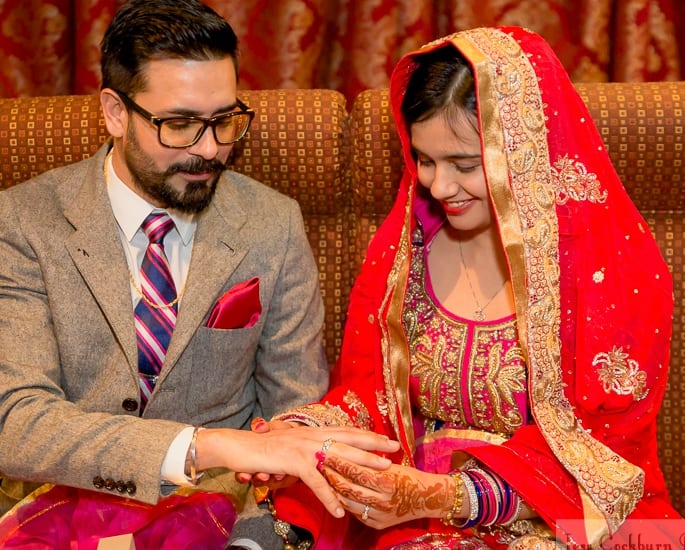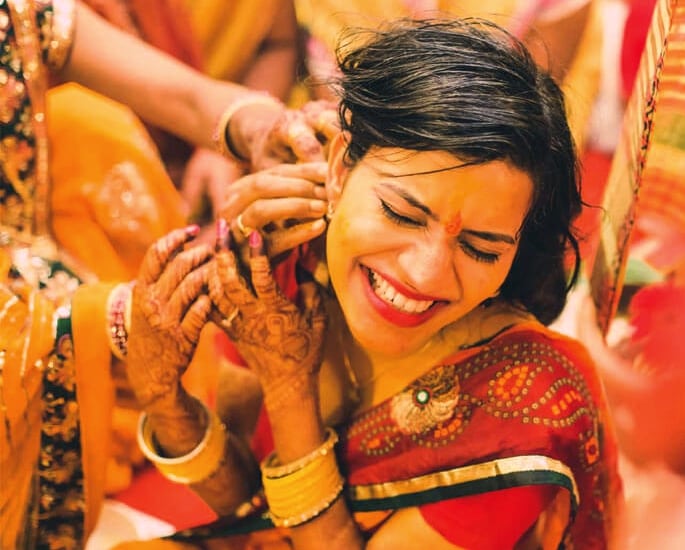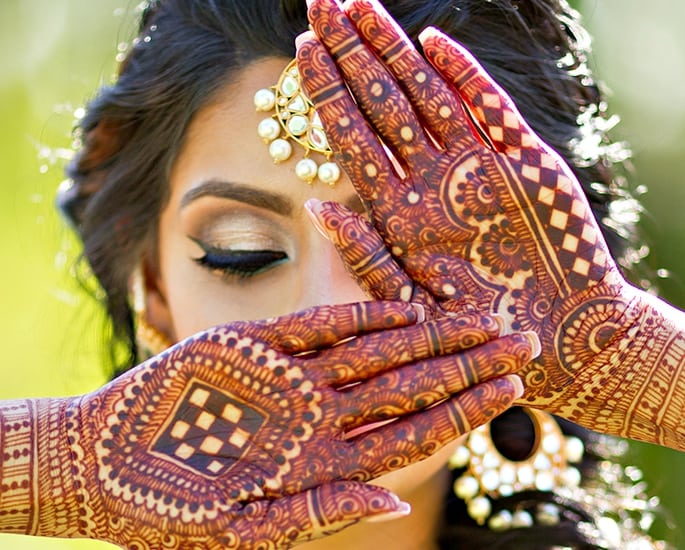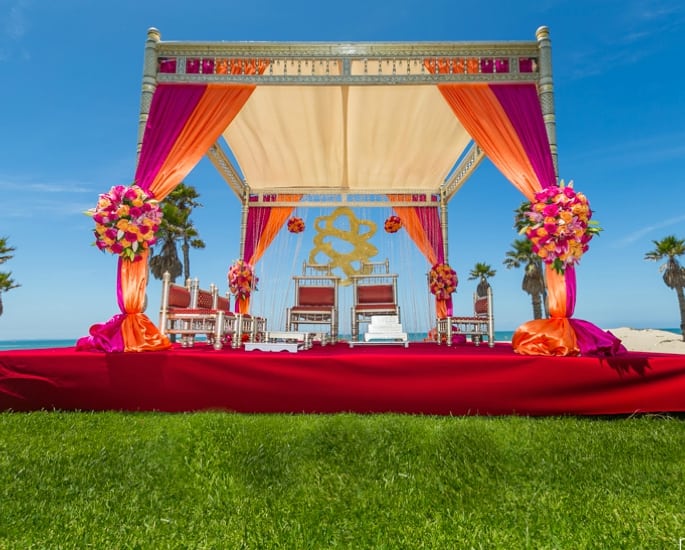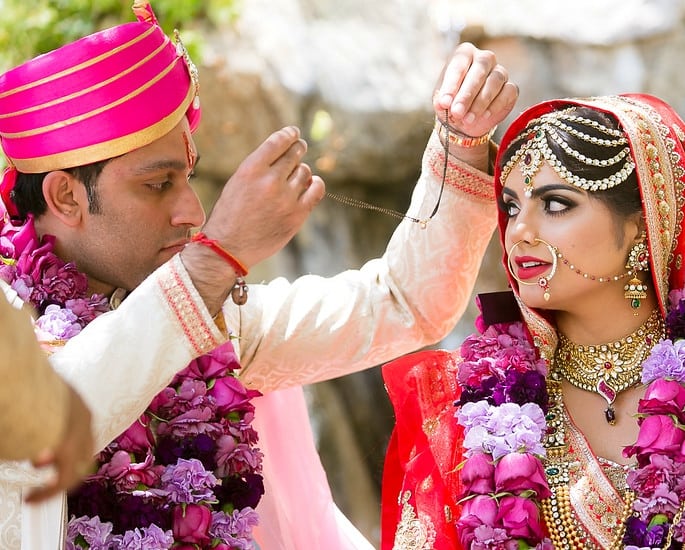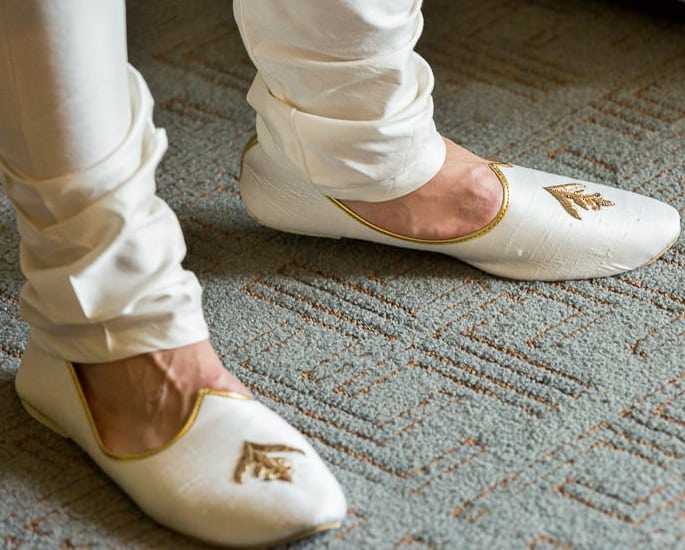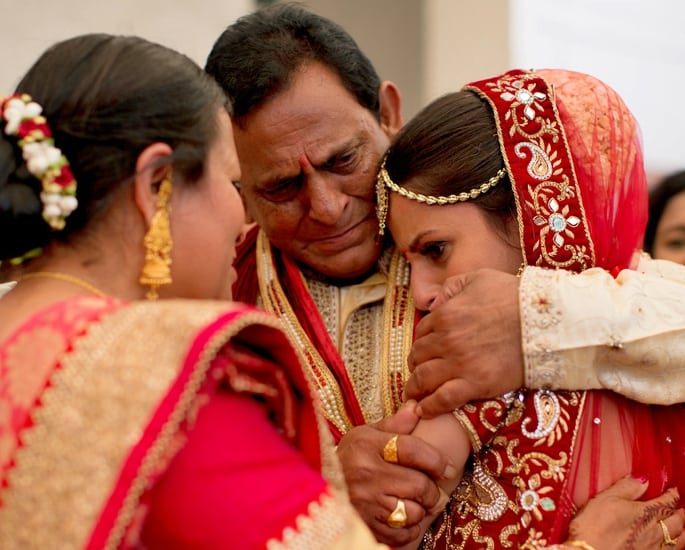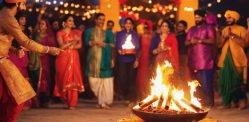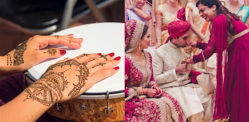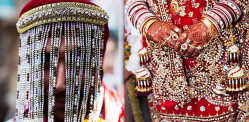The deeper the colour, the stronger the bond
In an Indian wedding, the same familiar practices and traditions have been repeated for centuries.
Every ethnic wedding has a different tradition put in place by their generation of married elders.
Some marry in the same location their parents did, and some wear a family heirloom.
Also famously shown in Bollywood movies, it is typical to see the bride wearing red and for the couple’s wedding date to be set by a holy priest.
A traditional Indian wedding will take the course of three days in total (or more). The last day is the big wedding.
In recent years it has been common to see a reception party take part on the same night.
Indian weddings are always celebrated in a vast, overly expensive way, but the most important part is the small rituals which have the greatest meanings.
The bride and groom do the previous two days of traditions with their own family, separate from one another, and then reunite on the day of their wedding.
Starting on the first day of celebrations is the ‘Tilak’, also known as the Rokaa ceremony.
However, in some cases, this is now done months before the actual wedding preparations begin.
The Tilak is an engagement between the families, it is the definitive moment where each family accepts each other for marriage.
Before traditional festivities begin, the bride and groom are made to find their holy date of marriage.
Kundli: The Holy Date
Hindus are serious believers of astrology and believe in the power of Kundli.
A Kundli is an Indian Vedic Astrology calendar that a lot of Hindus use to set the date of their wedding.
The Kundli calculates the bride and groom’s date, place, and time of birth and calculates the month that is the most auspicious for them to wed.
The wedding date is based on when their star signs are the most compatible – if they even are.
It is still a much-followed tradition within Indian weddings, and most elders in the family frown upon wedding dates if it has not been fixed by a priest in the Kundli first.
This has some issues in modern days.
The most popular wedding season is usually in June, July, and August worldwide, hence wedding venues and caterers are the most expensive at that time.
For western countries such as the United States and England, the weather is perfectly warm for an Indian wedding to take place.
In countries such as India, where temperatures can reach 40 degrees; June, July, and August are cool enough to have a comfortable and bright wedding.
If the priest cannot find a holy wedding date in those months, a lot of Indian couples suffer stigma for deviating from the Kundli.
Ganesh Ceremony
Some auspicious Indian weddings start with the Ganesh pooja which is orchestrated by a priest.
The purpose of this pooja is to remove any bad luck or negativity coming toward the bride and groom.
The Hindu diety, being the remover of obstacles, is the traditional way to start a wedding – depending on the family’s beliefs and traditions.
The ceremony will usually last an hour with the bride and groom’s closest families and friends present.
Rokaa
On this day, the eldest uncle in the family will have the responsibility to represent the bride’s family and provide the bride with her wedding outfit.
He and other respected men in the family will go to the groom’s house and formally accept the hand in marriage of their daughter and request for festivities to begin.
As this tradition is very outdated, it is now used as an occasion to visit the groom and his family with good wishes and to exchange engagement rings.
Sanjiv Patel, 23, was amongst his father and older uncles during the Rokaa for his brother’s wedding. He tells us:
“It was very fun and emotional. We had to formally accept the gifts as an okay to marry my brother.
“Then all the men had to hug it out.”
As this is a very old-age tradition, a priest sometimes accompanies the bride’s family to make sure the correct traditions are taking place.
Haldi
This ceremony varies in different states of India. For example, in Punjab, it is known as ‘Maiyan’.
As this is the day before the wedding, an old-age beauty ritual of applying a pure turmeric paste on the bride and groom takes place.
The turmeric is usually ground from its pure form and mixed with either oil or water for a smooth application.
The traditional reason why haldi (turmeric) is applied to the couple is so that their complexion is lighter, and they seem more fair-skinned on their wedding day.
This ties into the common taboo in India of darker-skinned boys and girls being considered less attractive.
But, in the modern world, it is seen as a purifying ceremony.
The benefits of turmeric are known worldwide.
It has been considered as a ‘superfood’ and a common ingredient in western face masks.
Usually, the women in the family will take turns singing songs and applying the paste on the bride or groom.
Mehndi (Henna)
Applying henna has been an Indian wedding tradition since the 12th Century AD.
The Mughals taught India the history of mehndi, and ever since it has been used as a way of body art.
Traditionally, the groom should apply mehndi on his hands and feet, but this tradition is less common now.
The Indian bride takes part in a mehndi ceremony, where she and her female family members and friends gather to apply henna.
Seen as more of a final party for the bride to have as a single woman, mehndi ceremonies are full of joy and pampering, with the exchanging of small gifts.
It’s said that the deeper the colour, the stronger the bond between husband and wife, and the better you will get along with your mother-in-law.
For this reason, brides often let the henna dry for up to eight hours or sleep with it on in extreme cases.
Another tradition with mehndi is hiding your husband’s name within the design for him to find later in private.
Red Wedding Attire
Indian brides trade their ‘something white’ for wearing red instead.
Traditionally, a bride would wear a bright red saree to show her youthfulness.
It is said that wearing red at your wedding symbolises commitment, spirituality, and fertility.
In more recent times, the red lengha has become more convenient, but equally impressive, than the traditional red saree.
A lengha consists of a long and heavy skirt with a cropped and fitted blouse paired with a wide dupatta (scarf).
Not only are they easier to wear on your big day, but they are also very versatile in style.
The Mandap
The mandap is an altar at which the Indian wedding ceremony takes place.
It is usually decorated with flowers, drapes, and lights.
The mandap is said to symbolise growth and well-being, and each pillar is believed to represent the couple’s parents.
The groom is traditionally set to arrive at the wedding and sit in the mandap before the bride makes her grand entrance to light the holy fire.
The holy fire, known as the ‘agni’ plays the part of being a witness to the wedding as the couple pledge their vows in the mandap.
Whilst this tradition is associated with Hindu weddings, more Punjabi weddings are donning this type of ceremony.
Mangalsutra
An Indian wedding takes the phrase ‘tying the knot’ literally.
A Mangalsutra is a traditional holy black threat that the groom ties around the bride’s neck.
The holy black thread is to distinguish the woman as married, and she is expected to wear it every day of her marital life, similarly to a wedding ring.
Traditionally the Mangalsutra should be black with some yellow, black, or red beads for decoration.
However, in recent times the black thread has been replaced by a gold necklace with black beads and is seen more commonly.
Hiding the Groom’s Shoes
This is a traditional Indian wedding prank that is commonly played between the bridal party and the groom’s best men.
When the groom arrives at the mandap, he must respectively take his shoes off as he has entered a holy area.
At that moment, it is the most critical time for the bridal party to snatch the groom’s shoes in exchange for money when he attempts to leave after the wedding ceremony.
Over the years, the groom’s party has wised up to such games and usually devises a plan to get his shoes before the bridal party does.
Money in exchange for the groom’s shoes can reach an astonishingly high amount.
Vidaai Ceremony
A common scene in an Indian wedding is the bride crying at the end.
This is because the final ceremony of the wedding is the bride saying goodbye to her parents.
The vidaai officially represents the bride leaving her home and family to start a new life with her husband.
She then takes a handful of rice to throw over her head to show thanks and pay homage to her parents’ care.
A common Indian notion is that when a couple gets married, they get married to their in-laws too.
The traditions mentioned in this article are fun, emotional, and meaningful.
Indian weddings are full of auspicious practices that are there for the prosperity of the bride, groom, and their families.
The family union is the epitome of Indian weddings and most traditions still exist today because of that.




















































